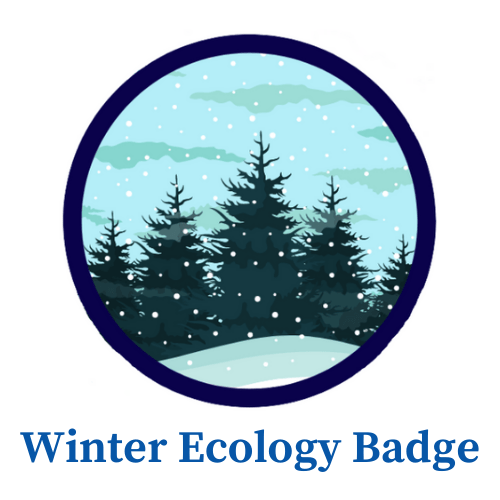
As of December 21st, the winter solstice, winter has finally fallen over the Triangle (and all of the northern hemisphere.) You may have started to notice some changes in the color of plants and the behavior of animals. Maybe some fluffier squirrels and some migrating birds?
Winter is one of the most difficult times for animals and plants that live outside, which means they need a lot of characteristics (also known as adaptations) that allow them to survive through the cold. Think about animals that live in the arctic and animals that live in your back yard; what are some differences?
Learn about what both flora (plants) and fauna (animals) have to do to survive through winter and then choose two activities from section three to complete and earn your badge! Good luck and happy exploring!
Section 1- Flora
Why Don’t Plants Freeze in Winter? Watch this video on youtube to learn why plants don’t freeze in winter and what “adaptations” they have to survive.
Section 2- Fauna
Animal Adaptation for Winter- Watch this video on youtube from the Cornell project Naturalist Outreach to learn about how animals hunker down or move to warmer places.
Section 3- Activities
Bird Watching- Winter is known as one of the best times to bird watch with many species moving all over the country! Go outside and see how many different birds you can find. You can scroll through this guide to help identify some birds that you might find.
Bird Feeder Craft- Make a bird feeder! This activity does require a few materials. You will need a pinecone (find one outside!), peanut butter or vegetable shortening, and bird seed. This craft is as simple as assembling everything together and then setting outside to wait for your flying friends to feast!
Polar Bear Blubber Science Experiment- This experiment will also require vegetable shortening and a little bit of a mess. Follow this link for instructions and learn how polar bears (and other arctic creatures) can stay warm in such frigid temperatures.
Frozen Bubbles!- In this activity, you will be able to watch ice in action! This activity does require corn syrup, dish soap, and below freezing temperatures so you may need to wait until dusk (or later in the winter) to be able to make this work! Follow this link to find out how!
Ice Fishing Science Experiment- All you need is ice, string, and salt for this experiment and you’ll be able to go fishing for some ice! Learn about freezing points and how chemistry helps make this magic happen! Follow this link for instructions.
Winter Nature Walk- If you’re lucky enough to go on a stroll through some snow, do not skip that opportunity. It is one of the best times to find animal footprints and have some fun. If you don’t have snow (as is most of the time in North Carolina) don’t fret! Winter walks can still be just as wonderful and magical. Head outside to see what evidence you can find of animals in action. Do you see any food stashes, fluffy squirrels, or migrating birds? Maybe some trees without leaves or leaves that have a thick waxy coat?


